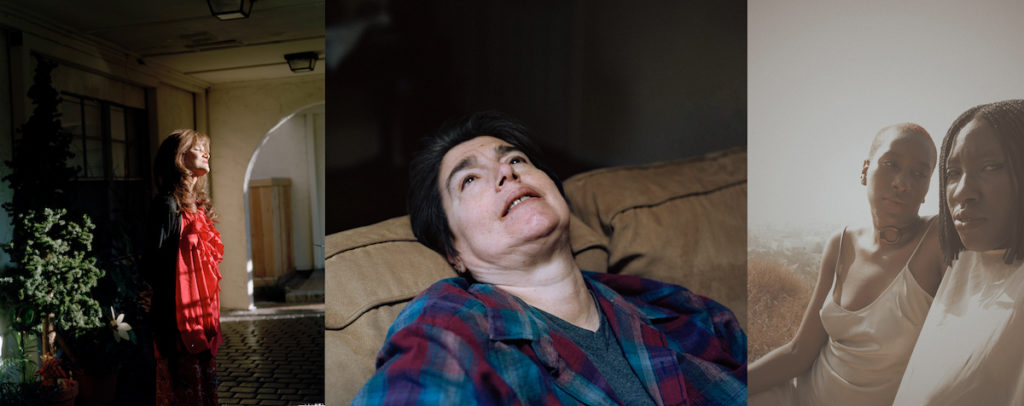Yes, and the body has memory…
Contact
Law Warschaw GalleryFine Arts Commons 105 651-696-6416
gallery@macalester.edu
facebook twitter instagram

Yes, and the body has memory
January 5—26
Featuring work of Leah Edelman-Brier, Lorena Molina, Carla Alexandra Rodriguez and Rikki Wright
Curated by Mara Duvra
Catalog Launch and Public Discussion
Wednesday, January 23
6:30 pm
How does familial and cultural history get passed on? What are the unexplainable, ineffable legacies of trauma and how is this carried through generations? This exhibition brings together artists whose work touches on home and all its multifaceted meanings, home as in land, place of origin, as in the body, as the corporeal and spiritual connections to mothers, sisters, aunts.
About the Artists
Lorena Molina
Lorena Molina is a Salvadoran multidisciplinary artist and educator. She is currently a visiting Assistant Professor of Art at the University of Cincinnati. She received her Master of Fine Art degree from the University of Minnesota in 2015 and her Bachelor of Fine Art from California State University, Fullerton, in 2012.
Molina was a recipient of the Diversity of Views and Experiences fellowship and The Kala Art Institute Fellowship. In the classroom, she works with students to understand the way that images are laden with history and vocabulary. Photography tells stories, but who gets to tell the story matters.
Carla Alexandra Rodriguez
Carla Alexandra Rodriguez is a first generation Venezuelan-American artist making work in Saint Paul, MN. Her work is in constant search of intimacy, the more intimate, or personal, the more universal. We connect to others through the telling of our lived experiences. The further inward she goes, the more others are let in.
In her current body of work she confronts the trauma of losing her parents, her mother due to late stage cancer, and her father a few years after due to mental illness. Both losses are traumatic, but in dramatically different ways due to her personal relationship with them and the context around their deaths. Even though it is painful to deal with these topics, Carla’s work is rooted in the practice of catharsis, and confronting these traumas and hardships in her art making is integral to it.
Leah Edelman-Brier
Leah Edelman-Brier is a visual artist primarily using the medium of photography. She received her B.F.A. from Rhode Island College and holds a M.F.A. in Art Photography from Syracuse University. As an artist she is interested in the female body. She creates images heavy in metaphor and simile. She aims to disrupt beauty ideals by using themes of desire, fertility, family, and metamorphosis to question the female experience throughout her work.
The series ‘Body Becoming’ aims to construct beauty out of what appears outwardly grotesque while questioning the resilience of the body. The images intensify the space between youth and decrepitude as figures within the work take on the roles of mother and daughter. The daughter fears what time has done to the mother, not the mother herself. She fears the weight of flesh, the pull of gravity, the uncertainty of health, things that are set in flesh and blood.
The images reveal the similarities in shape and size that the related bodies take on. The mixing notions of genetic lineage, the process of aging, and the lack of control presented by destiny, exacerbates an anxiety, which speaks to a profound fear of becoming the mother.
Rikki Wright
Rikki Wright is a Photographer and Artist based in Los Angeles, CA. Her work explores notions of community and sisterhood, especially among women of color, and looks at the way a community can mold or expand our ideas of femininity and masculinity, strength and beauty.
Wright grew up with two older sisters who were her best friends and her source of support through life’s trials and tribulations, beginning with the loss of Wright’s mother at the age of two. Her sisters taught her the power of having women by her side who she could be real with and depend on, and her work seeks to capture this sense of power. At the same time, she felt the void of her mother intensely, and her youth was marked by a constant sense of searching for examples of femininity and motherhood. At her grandmother’s house, she would spend hours studying the poses and gestures of the women in the family portraits hanging on the walls. Wright’s aunt was also a photographer, and she would accompany her aunt to the studio and marvel at the way women would command their bodies before the camera. Photography became a way for Wright to explore the void left by her mother, using the camera to imagine different possibilities for womanhood.
Yes, and the body has memory… is co-presented with Waiting Room.